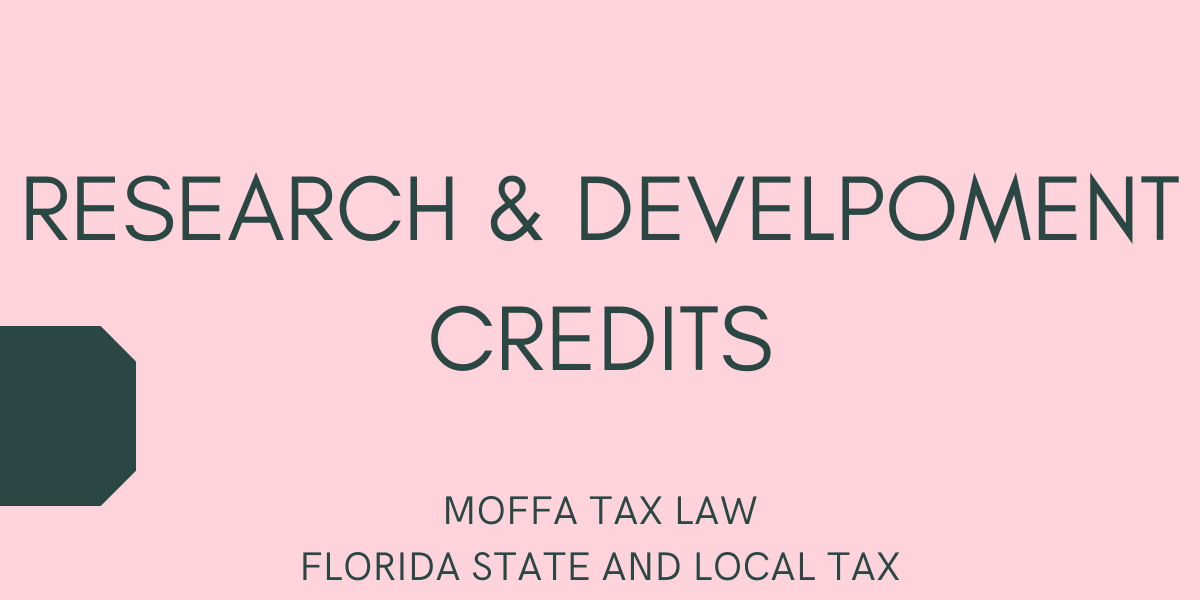NEWS & INSIGHTS


The federal research and development (R&D) tax credit remains a valuable tool for businesses investing in innovation, but staying compliant and maximizing the benefit is becoming increasingly complex. In 2025, a wave of tax court cases, evolving IRS enforcement strategies, and changes to Form 6765 are reshaping how businesses approach their R&D credit claims. Here’s a breakdown of what’s new and what companies should be thinking about.
Court Decisions Are Shaping the Future of R&D Credit Claims
Recent tax court cases are significantly impacting the IRS’s approach to R&D credit studies and audits. These cases influence both the scope of what’s considered eligible for the credit and how taxpayers must substantiate their claims. For instance:
Substantiation standards are under greater scrutiny.
Discovery and trial scope limitations are becoming a focus area in litigation strategy.
Key cases such as Little Sandy Coal Co., Intermountain Electronics, and Moore v. Commissioner are driving this evolving landscape.
Litigants are also challenging the extent to which the IRS can request information and documentation. Businesses need to be ready with robust, contemporaneous evidence to support their R&D activities.
IRS Focus Areas: Sampling, Business Components, and Documentation
Three technical issues are receiving heightened attention from the IRS:
Statistical Sampling: The IRS continues to question the reliability and methodology of statistical sampling in R&D credit calculations. Whether a company uses employee-based or project-based sampling, the methodology must be rigorous and align with IRS expectations (see Rev. Proc. 2011-42).
Business Components: The tax code defines a business component as a product, process, software, or invention that is either used in the business or offered to customers. But many taxpayers do not maintain records organized by business component. Identifying and tracking qualifying activities by component is now essential.
Substantiation: Documentation is key. Examiners are focused less on the science of the research and more on whether taxpayers can present documentation that aligns with the statutory four-part test. Tools such as employee interviews, surveys, and direct testimony may help, but they must be well-structured and supported.
IRS Reorganization and Section 174 Developments
The IRS has undergone a significant internal restructuring to improve administration of credits like the R&D credit. The Passthroughs and Special Industries (PSI) Office has been divided into two specialized units—one focusing on passthrough entities and estates, and the other on energy credits, incentives, and excise taxes. This reorganization is expected to drive more targeted enforcement and guidance.
Section 174 guidance is also evolving. Recent updates include:
Notice 2023-63 and Notice 2024-12
New Revenue Procedures (2024-23, 2024-34, 2025-8) addressing automatic accounting method changes and rules for short taxable years
Businesses should ensure their treatment of specified research or experimental (SRE) expenditures complies with this updated guidance—especially for 2022–2024 tax years.
Major Changes to Form 6765
Form 6765, which taxpayers use to claim the R&D credit, now requires significantly more detail. Key changes include:
New Controlled Group Reporting Requirements: Greater transparency is now required when multiple related entities claim credits.
Section E: Requires disclosure of the number of business components, officer wages, acquisitions and dispositions, and new categories of expenses.
Section G: Applies to large claims, either over 80% of qualified research expenses (QREs) or involving 50+ business components. It requires taxpayers to provide detailed classifications, wage data, and more.
The IRS is expected to closely monitor compliance with these new sections. Businesses should prepare for more detailed questions and requests during examinations.
Final Thoughts
As the R&D tax credit continues to evolve, businesses need to stay proactive. From tracking activities by business component to strengthening substantiation procedures, every aspect of the credit process is under the microscope. With the IRS’s new organizational structure and an expanded Form 6765, companies should expect more thorough scrutiny and be prepared with airtight documentation.
Now is the time to revisit your R&D credit strategy—and make sure it’s audit-ready.
Share
Additional Articles by the SALTy Orange at Moffa Tax Law:
Tax Refund Litigation – Tips & Pitfalls
NEWS & INSIGHTS Tax Refund Litigation – Tips & Pitfalls Refund Litigation in 2025: Key Risks, Strategic Decisions, and Emerging…
Research & Development Tax Credits – 2025 Update
NEWS & INSIGHTS Research & Development Tax Credits 2025 Update The federal research and development (R&D) tax credit remains a…
The Biggest Cases in State and Local Tax 2024-25
NEWS & INSIGHTS March 2025 State and Local Tax Update: Deference Battles, Trial-Ready Cases, and New Reform Proposals March brought…

Jeanette Moffa, Esq.
(954) 800-4138
[email protected]
Jeanette Moffa is a Partner in the Fort Lauderdale office of Moffa, Sutton, & Donnini. She focuses her practice in Florida state and local tax. Jeanette provides SALT planning and consulting as part of her practice, addressing issues such as nexus and taxability, including exemptions, inclusions, and exclusions of transactions from the tax base. In addition, she handles tax controversy, working with state and local agencies in resolution of assessment and refund cases. She also litigates state and local tax and administrative law issues.


